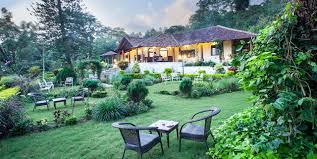Zanskar Valley Unveiled: Ladakh’s Off-the-Beaten-Path Cultural Treasure Julley. Welcome to Zanskar, where every mountain breathes, every tradition speaks, and every moment is a testament to human resilience. Unquestionably, the Zanskar Valley is one of the best places to see in Ladakh. As of late, among the many attractions of Ladakh, the Zanskar Valley is one that has become increasingly popular. While Ladakh’s moonscape-like terrains and legendary Buddhist monasteries attract many visitors, this remote Himalayan realm has an underrated jewel. The rugged, high-altitude enclave delivers the ultimate old-world cultural immersion into traditional Ladakhi life and deserves more attention than it receives. From iconic mountainside monasteries and centuries-old traditions to heart-pounding trekking adventures, Zanskar packs a breathtaking punch of authenticity and a raw natural splendour. Let’s explore the hidden treasures of this secluded valley. Table of Contents A Spiritual Journey Back in Time Abi (grandmothers) often said that people have danced with these mountains since time immemorial. The Zanskar Valley isn’t just geography, it speaks volumes of ancestral narrative, carved by centuries of survival, spirituality, and unyielding mountain spirit. Did you know that Zanskar is one of the last remaining enclaves where Ladakh’s ancient Tibetan-Buddhist traditions have survived virtually intact for centuries? Tucked deep within this remote Himalayan valley, you’ll find living museums of Ladakhi heritage brought to life through ancient monasteries, rural villages and resilient locals. The gompas (monasteries) aren’t tourist attractions. They are the heartbeats of the communities. Take Phugtal Monastery for example is a living memory. Carved into the mountain’s face like a child nestled in its mother’s embrace, this monastery has witnessed joys, sorrows, and endless winters. Ancient gompas like Stongdey and Phugtal sit high on cliffs, looking like something out of a dream. Inside, colourful murals and detailed thangka paintings fill the walls. Some, like Phugtal, hold carved stone inscriptions and Buddhist relics that are thousands of years old. Visiting these monasteries feels like stepping back in time. But beyond the monasteries, Zanskar’s isolated villages and hardy inhabitants offer an authentic glimpse of the region’s traditional agrarian lifestyles. You’ll encounter weathered apricot farmers, yak herders and weavers carrying on age-old customs in the harshest of Himalayan conditions, untouched by the wave of modernity. This is one of the amazing features that makes it one of the best places to see in Ladakh. During Cham festivals, the monks perform sacred mask dances. It’s not just a mere performance but a ritual that connects ancestors, to the Buddhist teachings that have guided their survival through centuries of harsh mountain conditions. Experiencing sacred traditions like the Zanskar Buddhist Mask Dance Festival or a high mountain Chadar trek on the frozen Zanskar River offers a transcendent cultural immersion that’s rarely found across India. The Ultimate Off-Grid Trekking Speaking of Chadar treks, the Zanskar Valley is pretty much an ultimate off-the-grid trekking playground for the most adventurous souls out there. The route from Padum to Darcha isn’t a trekking trail, but a living historical path where every stone tells a story of trade, migration, and human resilience. Mountain passes that rise above 4,500 meters? It’s just a daily commute for the locals out there. The Stok Kangri peak, famed Markha Valley Trail and Chadar “Frozen River” treks are just the start of Zanskar’s heart-pounding, high-altitude trekking circuits tailored for intrepid explorers. It’s arguably one of the last truly remote and untamed trekking destinations in all the Himalayas. One can only reach these old mountain villages by walking. Along the way, you’ll find remote monasteries and meet hardy local nomads who call this region home. Ladakhi herdsmen who call these rugged peaks and valleys home. Talk about a once-in-a-lifetime blend of thrills, cultural encounters, and jaw-dropping panoramic scenery. Zanskar Agricultural Wisdom in Winters Kharif season is the lifeline. With barely three months of potential cultivation, the farmers transform rocky terrains into breathing fields of barley and wheat. The agricultural techniques? They’re not methods, they’re generational wisdom passed through centuries. The dzos (yak-cow hybrids) aren’t just livestock. They’re the partners and lifelines. They carry the goods, provide milk, and survive where other animals would perish. It is said by the locals that a good dzo is worth more than gold in the valleys. When winter arrives, it arrives with a fury that would break lesser spirits. The locals generally survive through gachig (community cooperation). No family is left alone. If one struggles, the entire village supports. The famous chang (barley beer) isn’t just a drink; it’s a symbol of shared hardship and collective joy. Here life isn’t a picturesque postcard. It’s hard. Winters can drop temperatures to -30°C. Modern amenities? Forget about it. The strength isn’t in comfort but in the ability to create comfort in the most challenging conditions. Language of the Land The Locals here speak Bodhi, a dialect that’s part language, part poetry. Julley isn’t just “hello” it is considered a blessing, an acknowledgement of shared human experience. Here the words carry the mountain’s wisdom. Beyond Tourism Despite being one of the best places to see in Ladakh, Zanskar isn’t a place to be “discovered.” It’s not waiting to be understood or explored. It’s living, breathing, evolving. The traditions aren’t static museum pieces, they adapt, and they survive. To truly know Zanskar, you must listen. Not just with ears, but with your entire being. Feel the mountain’s heartbeat. Understand that every snow-capped peak, every frozen river, and every monastery stone carries a story older and deeper than any traveller’s narrative. Julley! Welcome to Zanskar, where every mountain breathes, and every tradition speaks Travelling to Zanskar is not easy. You need special permits, a strong 4X4 jeep to handle the steep mountain roads, and careful planning for every village, monastery, and trek. But that’s what makes Zanskar so unique. Its remote location keeps its untouched beauty and way of life alive, a rarity in today’s world. So, buckle up those hiking boots, prep for altitude and get ready for the hyper-scenic, hyper-cultural adventure of a lifetime in Ladakh’s incredible Zanskar









